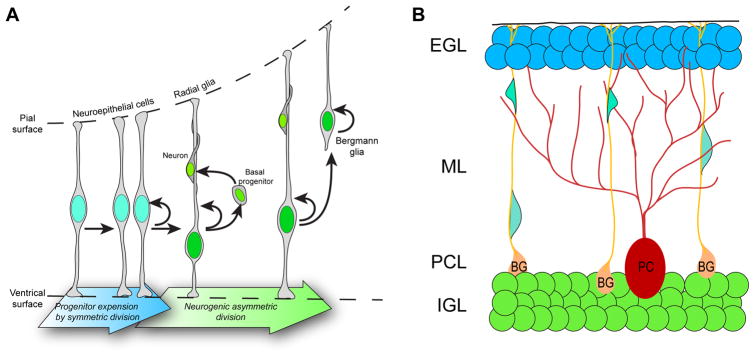Figure 1.
(A) Progression of neurogenesis and the birth of BG precursors in the cerebellum during embryonic development. The arrows represent, either, a transformation, differentiation or cell division event. Neurogenesis in the cerebellum is a multi-step process. Neuroepithelial progenitors have direct contacts with the ventricular and pial surfaces and undergo symmetric cell division to expand the number of progenitors. As development progresses, neuroepithelial progenitors transform into radial glia cells, which still retain their pial and ventricular contacts and starts to generate basal progenitors that will directly give rise to neurons. Some of the radial glia also start to lose its ventricular processes and give rive to another type of basal progenitor, BG precursors, which retain their apical processes and serve specialized functions in the cerebellum. (B) Configuration of different neuronal and glial populations in the perinatal cerebellum. Granule neuron progenitors from the external granular layer (EGL, in grey shades) migrate along BG basal fibers towards the internal granular layer (IGL), their mature location in the cerebellum. BG – Bergmann glia; ML- molecular layer; PC – Purkinje cells; PCL – Purkinje cell layer.

